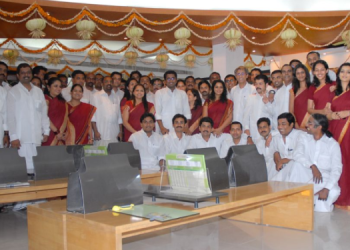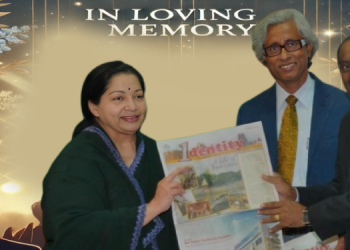The national elections are just a few years away and all political parties have started preparing for ‘Mission-2024’. They are trying to find the best way to approach this very important election. Will the BJP led NDA to repeat its historic wins or will the opposition be successful in putting together a team that can challenge and overcome the current administration? We approach this question not from a political, but from a branding perspective to highlight the importance of brand image and brand equity.
This article will use the brand association model developed by Keller to understand how brand equity could impact the outcome of the 2024 elections. Keller has identified brand awareness and brand associations as key dimensions which influence brand equity. Applying this model will allow us to make comparisons across the leader and the challenger. In this election, we can see the classical situation of a challenger brand trying to upstage the dominant market leader brand to capture market (vote) share.
Let us start with 2014 when Modi advanced from being the CM of Gujarat to become the PM of India. His brand image was built on his famous “Gujarat Model’ to showcase his administrative and development capabilities. Aaker (2012) explains personal branding in terms of how each and every individual can create a brand and this will reflect in how that individual is perceived by others. If the brand image is positive, people will look with respect and have a favorable impression of the person. Personal branding plays a vital role for celebrities from Bollywood and sportspersons to get lucrative endorsement offers. Big B Amitabh Bachchan, Virat Kohli, and Priyanka Chopra are some examples who have successfully maintained a strong brand image among their followers.
Brand Modi was projected around key positive associations like leadership abilities, oratory skills, and a corruption-free clean administration around the Gujarat model and what was already achieved in that state. Other associations included the fact that he was a man from the soil who made his mark solely on his talent and not due to his family. These associations were augmented with extensive advertising and media coverage with positive stories about his childhood and the simple common life of his mother and wife without the typical luxury of political benefits. More importantly, brand Modi capitalized on mistakes made by the weakened Congress brand. Who can forget the “Chai PeCharcha” launched by Modi after Congress referred to him as a Chaiwala? When a previously strong brand like Congress falters, it offers an opportunity for a lesser-known brand to capitalize and take over the mandate. Brand Modi was able to do this by building an aura around his achievements – the brand associations of shifting of Tata Nano plant from Bengal to Gujarat, the Gujarat model of development, the connect with the younger generation through extensive use of new social media tools like Twitter, and the overall connect through 500 rallies pan India. At the same time, Brand Modi was able to restrict the focus on some of the negative aspects like the 2002 riots by shifting the focus to the more positive stories. In balance, the positive associations far outweighed the negatives. Congress’s failure to emphasize the negatives for Modi brand also added to brand image because Congress lacked a powerful brand with credibility to fight the rising Modi brand.
The struggling and fragmented opposition has found a new challenger in Mamata Banerjee after her magnificent show in the West Bengal elections. She is also carefully drafting and projecting her image and efficient administration skills to the national level to take a shot at the coveted post of the Prime Minister of India. This may be an appropriate time to look at her brand image and compare it with the current incumbent (Modi) as they could potentially fight it out in the elections in 2024.
The challenger brand, Mamata seems to be following a very similar path having set out to achieve something similar to brand Modi. But does she have a large number of positive brand associations and lesser number of negative associations to build a strong brand image to challenge Modi? An answer to this question could very well determine the path that India takes in 2024.
Brand Mamata is a strong brand and extremely well known and liked in Bengal. However, her awareness is extremely low outside Bengal. And awareness is the foundation on which other brand associations can be developed. While brand Modi had the backing of powerful brand BJP to give him a pan India presence, brand Mamata lacks the organizational structure to do so. She will have to depend on a number of secondary brands like Congress, SP, BSP, CPM, etc. to support her in other states. A major problem is that these smaller brands are not strong enough and may actually prove to be a hindrance to brand Mamata and may dilute her brand equity. Her loss in Nandigram could prove devastating if opposition parties leverage and highlight it, thus reducing her brand equity. Further, her members in Parliament are not national figures, again failing to strengthen her brand image. However, she is a powerful brand by herself with strong positive associations like connecting with the common man, the Hindu card used during the Bengal election, simplicity, and being a former central minister. She also comes from similar roots like Modi without any family or dynasty support. Balancing this are the negative associations of low awareness, post-election violence in Bengal, and potential religious polarization. Overall, this signals that at present brand Mamata is not as powerful as brand Modi was in 2014.
So, what is the bottom line? When we compare brand Mamata in 2024 to brand Modi in 2014, we see distinct differences in their brand equity. Of course, Mamata has the time to develop and build her brand to project a more national image. Moreover, Mamata has to face minor regional challengers like Arvind Kejriwal trying to their luck for the national face of the opposition.
At present, Modi seems to have far higher awareness and many more positive associations than brand Mamata. However, Mamata may be able to leverage some secondary associations like other politicians (e.g., Rahul Gandhi) or political operatives like Prashant Kishor who has been successful in recent times. PK is a well-known brand in political circles and may be able to develop specific brand associations. Other secondary associations like Bengal pride may not be very positive across India.
We will have to wait till 2024 to find out the outcome of the brand Didi versus brand Modi election battle!
Authored article by- Sridhar Samu, Associate Professor of Marketing, Great Lakes Institute of Management/ Anubhav Mishra, Associate Professor of Marketing, Jaipuria Institute of Management

















